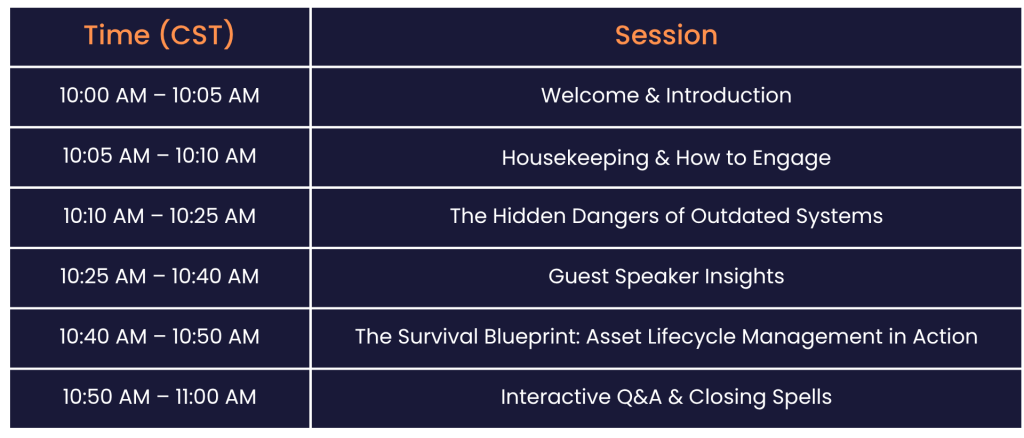
Skip Tamke
Field Chief Technology Officer
Virtual Tech Gurus

Michael Caplan
Chief Technology Officer
InBalance


Outdated assets are rising from the dead - bringing risks that could cripple your infrastructure.
Learn how to detect haunted systems, plan for replacements, and survive the End-of-Life storm.





Field Chief Technology Officer
Virtual Tech Gurus

Chief Technology Officer
InBalance
Time is running out
Grab your seat now and get ahead before the chaos unfolds
5000 Quorum Drive
| Suite 710 | Dallas, TX 75254
Field Chief Technology Officer
With decades of experience leading Professional Services in data center transformation, Skip has helped global enterprises navigate critical shifts in technology lifecycles — from mainframe to cloud. A specialist in building high-impact consulting practices, he brings deep expertise in managing EOL/EOS transitions that protect business continuity and maximize ROI. Join him to gain practical insights on turning EOL challenges into strategic modernization opportunities.
Chief Technology Officer
Brings a wealth of experience in driving digital transformation through a prescriptive, consultative approach. At InBalance, he leads innovation across next-generation data centers, multi-cloud, and data & DevOps solutions — all built with a security-first mindset. As a guest speaker in our EOL & EOS webinar, Michael will share how organizations can strategically navigate technology transitions while ensuring resilience, scalability, and security.